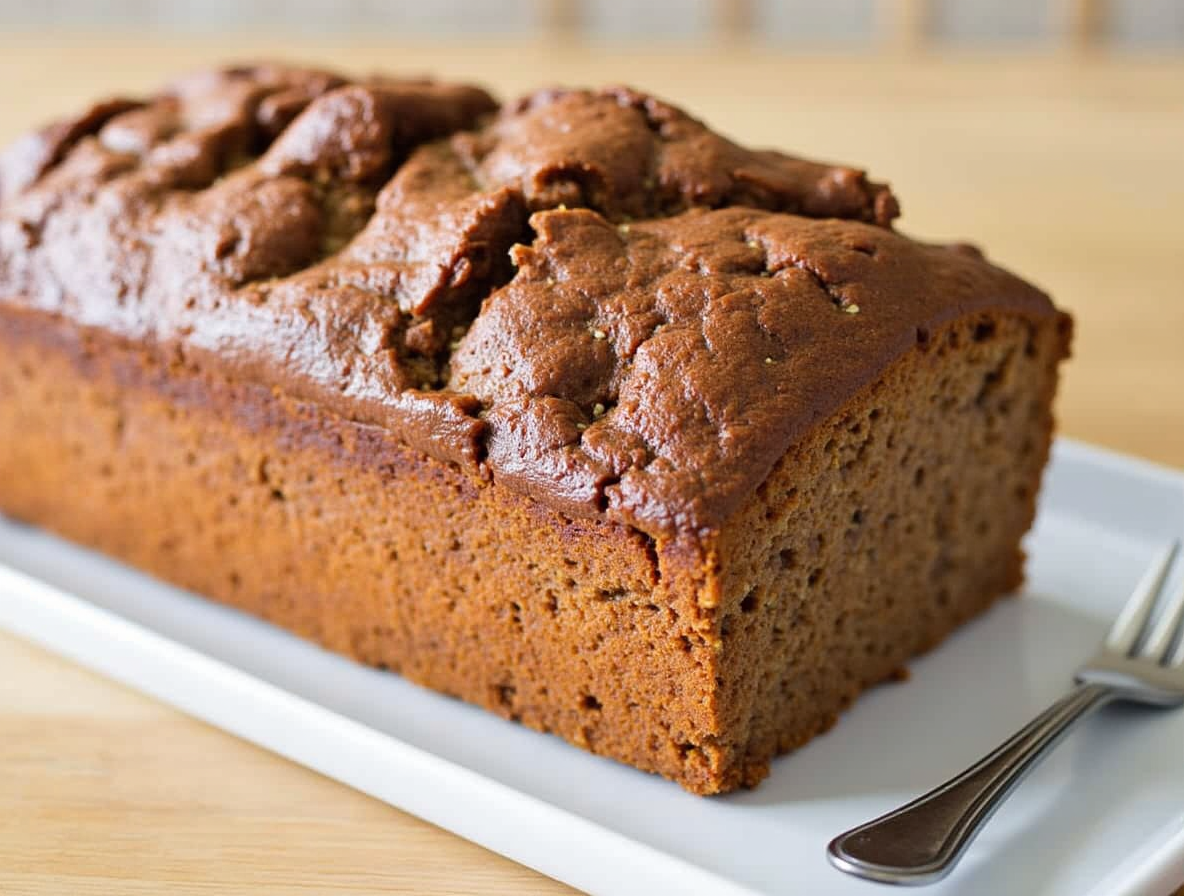The Secret to Perfect Cinnamon Donut Bread Recipe (Tested 50+ Times)
Cinnamon donut bread recipe enthusiasts, rejoice! After testing this recipe more than 50 times, I’ve finally perfected a loaf that delivers the moist, tender crumb that melts in your mouth with every bite. This delightful treat combines the beloved flavors of cinnamon sugar donuts with the convenience of a quick bread.
What makes this cinnamon sugar donut bread so special is how it captures that distinctive donut-like texture without any frying. The easy cinnamon donut bread recipe requires just minutes of preparation time, yet creates a cozy treat that’s perfect for breakfast, brunch, or dessert. Additionally, the rich cinnamon swirl donut bread recipe features a perfect balance of sweetness with 1½ cups of granulated sugar in the batter and a spiced coating made with cinnamon and nutmeg.
Throughout this guide, I’ll share all my hard-earned secrets for creating the perfect loaf every time. From choosing the right ingredients to mastering that beautiful cinnamon swirl, you’ll learn exactly how to achieve that fluffy, cakey consistency that rivals your favorite cake donuts. Best of all, this versatile treat can be stored at room temperature, refrigerated, or even frozen for later enjoyment!
The key ingredients that make cinnamon donut bread perfect
The perfect cinnamon donut bread relies on a careful balance of key ingredients. Each component plays a crucial role in creating that signature donut-like texture and flavor we all crave. Let me walk you through what makes this recipe stand out from ordinary quick breads.
Choosing the right fat: butter vs. oil
The debate between butter and oil isn’t just about flavor—it’s about texture too. In my recipe testing, I discovered that using a combination of butter (¼ cup) and oil (¼ cup) creates the ideal balance. Butter provides rich flavor while oil contributes to moisture retention.
When butter is used alone, it creates a denser, more random texture with pronounced flavor. Meanwhile, oil produces a more open crumb with uniform tiny holes. Furthermore, oil coats the flour in a way that slows gluten formation, resulting in a more tender crumb. By combining both, we get the best of both worlds—flavor and texture!
Why buttermilk matters
Buttermilk isn’t just a fancy ingredient—it’s a game-changer. The slight acidity in buttermilk tenderizes the gluten in the dough, creating a softer, more delicate texture. Moreover, it reacts with baking soda to produce carbon dioxide, making your bread lighter and fluffier.
Beyond texture, buttermilk adds a subtle tang that balances the sweetness of the sugar. In fact, authentic buttermilk contains more calcium than regular milk, plus other vitamins and minerals. If you don’t have buttermilk on hand, you can make your own by adding ½ teaspoon of white vinegar to ½ cup of whole milk.
The role of cinnamon, nutmeg, and molasses
The signature flavor of cinnamon donut bread comes from this powerful trio. Cinnamon provides that classic warm, sweet flavor we associate with donuts. Nutmeg, though optional, adds a warm, nutty undertone that complements the cinnamon perfectly.
A touch of molasses (½ teaspoon) deepens the flavor profile with a hint of smokiness and sweetness. However, if molasses isn’t available, you can substitute honey, maple syrup, or dark corn syrup.
Optional add-ins: nuts, raisins, or chocolate chips
Want to elevate your cinnamon donut bread? Consider these delicious add-ins:
- Chopped nuts like walnuts or pecans for a satisfying crunch
- Raisins for bursts of natural sweetness
- Chocolate chips for indulgent pockets of meltiness
- Chopped apples for moisture and fruity flavor
Just remember not to add too many mix-ins, as this can weigh down the loaf and prevent proper rising. One well-chosen addition is often better than overwhelming your bread with multiple ingredients.
Step-by-step guide to making the perfect donut bread recipe
Now let’s dive into the actual process of making this irresistible treat. After perfecting this recipe through dozens of test batches, I’ve narrowed down the exact steps that guarantee success every time.
1. Preparing the batter
Initially, preheat your oven to 350°F (175°C) and thoroughly grease a 9×5-inch loaf pan with butter or non-stick spray. In a medium bowl, whisk together your dry ingredients—flour, baking powder, and salt. Set this aside.
In a larger mixing bowl, combine the oil (¼ cup), softened butter (¼ cup), and sugar (1 cup) until the mixture becomes light and fluffy, about 3-4 minutes. Subsequently, beat in the eggs one at a time, followed by vanilla extract, ensuring each ingredient is fully incorporated before adding the next.
Next, gradually add the dry ingredients to the wet mixture in three parts, alternating with buttermilk. Always start and end with the dry ingredients. This method prevents overmixing and helps maintain that tender crumb we’re aiming for.
2. Creating the cinnamon swirl
Remove approximately ¾ cup of the prepared batter and transfer it to a separate smaller bowl. Add brown sugar, ground cinnamon, and ½ teaspoon molasses to this portion, stirring until well combined. This creates our distinctive cinnamon swirl mixture that gives the bread its signature flavor.
3. Layering and swirling the batter
Pour half of the plain batter into your prepared loaf pan. Spoon half of the cinnamon mixture in small dollops over top. Once that’s done, add the remaining plain batter, then finish with the rest of the cinnamon mixture.
Using a butter knife or toothpick, gently swirl the batters together with a few strokes. Be careful not to overmix—we want visible swirls, not a uniformly mixed batter.
4. Baking time and temperature tips
Place the loaf pan in your preheated oven and bake for 45-50 minutes. For accurate results, insert a toothpick into the center—it should come out with just a few moist crumbs attached.
Allow the bread to cool in the pan for about 20 minutes before transferring to a wire rack.
How to coat your cinnamon sugar donut bread like a pro
The finishing touch that transforms your cinnamon donut bread from good to spectacular is the coating. This sweet, spiced exterior is what truly gives your loaf that authentic donut flavor and feel. Let me share my tested techniques for achieving that perfect cinnamon sugar finish.
When to apply the butter coating
Timing is critical when coating your cinnamon donut bread recipe. Apply the butter while the loaf is still warm but not hot. Specifically, let the bread cool in the pan for about 10 minutes after baking before attempting to coat it. At this stage, the bread has set enough to handle yet remains warm enough for the butter to absorb properly.
According to my testing, warm bread allows the butter to penetrate slightly, creating that characteristic moist exterior that donuts are known for. Nevertheless, if the bread is too hot, the coating will simply melt off; too cool, and the butter won’t adhere properly.
Mixing the perfect cinnamon sugar blend
The ideal cinnamon sugar ratio is approximately 1:4 – meaning 1 part cinnamon to 4 parts sugar. In practical terms, this translates to ¼ cup (4 tablespoons) of cinnamon to 1 cup of granulated sugar.
For a richer flavor profile, consider these variations:
- Add brown sugar to your mixture for caramel notes
- Include a pinch of nutmeg for warmth
- Mix in a touch of vanilla powder for depth
Simply combine all ingredients in a small bowl and whisk thoroughly to eliminate any lumps. This mixture can be stored in an airtight container for up to 2 years, making it a handy pantry staple.
Dipping vs. brushing: which method works best?
Based on extensive testing, dipping provides the most consistent coverage, particularly for achieving that authentic donut-like exterior. To dip effectively, pour melted butter into a shallow dish, then roll each side of your loaf in it until fully coated.
Alternatively, brushing offers more control over the butter quantity. Yet, this method sometimes results in uneven application, especially around the edges and corners of the loaf.
Regardless of your chosen method, be sure to pay special attention to the edges, which tend to be drier and crispier. These areas benefit from a bit of extra butter before applying the cinnamon sugar mixture.
Storage, serving, and variations to try next
Once your cinnamon donut bread is perfectly baked and coated, proper storage becomes essential to maintain its freshness. Let me share what I’ve learned after countless batches.
How to store at room temp, fridge, or freezer
For room temperature storage, place your bread in an airtight container or sealed ziplock bag for up to 3 days. Keep it away from direct sunlight to prevent drying out or mold growth.
In the refrigerator, your cinnamon sugar donut bread stays fresh for 4-5 days. Although refrigeration extends shelf life, note that the texture might become slightly denser.
For freezer storage, first allow your bread to cool completely, wrap it tightly in plastic wrap, and place in a freezer-safe bag. Your donut bread will remain fresh for up to 3 months. To thaw, leave at room temperature for about an hour or warm slightly in the microwave.
Serving ideas for breakfast, snack, or dessert
This versatile cinnamon donut bread shines at any time of day:
- Pair a warm slice with coffee or tea for a delightful breakfast
- Serve alongside fresh fruit or yogurt for a balanced morning meal
- Toast a slice and spread with cream cheese for an afternoon snack
- Top with vanilla ice cream or whipped cream for an elevated dessert experience
Turning the recipe into muffins or mini loaves
Easily transform this recipe into muffins by pouring the batter into a greased or lined muffin tin. Bake at 350°F for 13-15 minutes, checking with a toothpick for doneness. For mini loaves, divide the batter between prepared mini loaf pans and bake for approximately 25-30 minutes.
Fun variations: cinnamon raisin, nutty swirl, or chocolate chip
Customize your next batch with these tasty options:
- Add 1 cup of raisins to create classic cinnamon raisin bread
- Mix in chopped walnuts, almonds, or pecans for added crunch
- Fold in mini chocolate chips for an extra indulgent treat
- Substitute brown sugar in the batter for richer, caramel-like sweetness
- Swap molasses for honey or maple syrup for a different flavor profile
Conclusion
Throughout my journey of testing this cinnamon donut bread recipe over 50 times, I’ve discovered that perfection lies in the details. Certainly, the combination of butter and oil creates that ideal texture, while buttermilk provides the tender crumb we all crave. The marriage of these ingredients yields a loaf that captures the essence of your favorite donuts without any frying.
The cinnamon sugar coating, therefore, transforms this bread from simply delicious to absolutely irresistible. Remember to apply it when the bread is warm but not hot for that authentic donut-like finish. This step, though seemingly small, makes all the difference in the final product.
What makes this recipe truly special, however, is its versatility. You can enjoy it as a cozy breakfast with coffee, a satisfying afternoon snack, or even an indulgent dessert topped with ice cream. Additionally, you can customize it with mix-ins like nuts, raisins, or chocolate chips to create endless variations that suit your taste preferences.
Storage proves remarkably simple as well. The bread stays fresh at room temperature for several days, lasts longer in the refrigerator, or freezes beautifully for months. This flexibility means you can prepare it ahead of time for unexpected guests or weekend brunches.
Last but not least, don’t hesitate to experiment with transforming this recipe into muffins or mini loaves. The same batter adapts wonderfully to different shapes and sizes, still delivering that distinctive cinnamon donut flavor we’ve worked so hard to perfect.
Whether you’re a seasoned baker or just starting out, this cinnamon donut bread recipe deserves a place in your regular rotation. After all, with a recipe tested this thoroughly, you can bake with complete confidence, knowing you’ll achieve that perfect balance of fluffy texture and warm cinnamon flavor every single time.
FAQs
Q1. How long does cinnamon donut bread stay fresh? When stored in an airtight container at room temperature, cinnamon donut bread stays fresh for up to 3 days. If refrigerated, it can last 4-5 days, and when frozen, it remains good for up to 3 months.
Q2. Can I make this recipe into muffins instead of a loaf? Yes, you can easily transform this recipe into muffins. Simply pour the batter into a greased or lined muffin tin and bake at 350°F for 13-15 minutes. Check for doneness with a toothpick.
Q3. What’s the secret to getting the perfect cinnamon sugar coating? The key is to apply the butter coating while the bread is still warm but not hot, typically after cooling in the pan for about 10 minutes. This allows the butter to penetrate slightly, creating that characteristic moist exterior.
Q4. Can I customize this recipe with add-ins? Absolutely! You can add chopped nuts, raisins, or chocolate chips to the batter. Just be careful not to add too many mix-ins, as this can weigh down the loaf and prevent proper rising.
Q5. Why does this recipe use both butter and oil? Using a combination of butter and oil creates the ideal balance of flavor and texture. Butter provides rich flavor while oil contributes to moisture retention, resulting in a tender crumb with a delicious taste.


